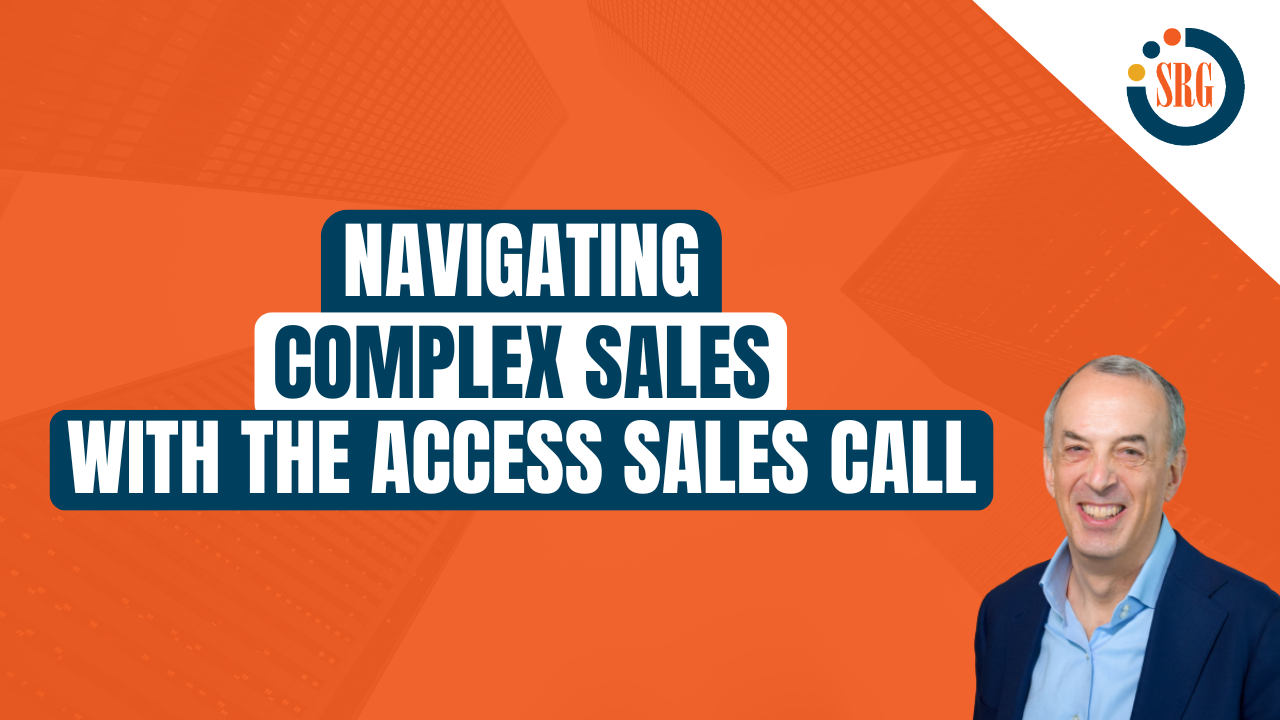In most sales situations, prospecting means setting the appointment while the actual selling occurs during the meeting. This distinction gets murkier when you're selling into a complex sales account. Here's why.
In complex accounts there are many decision-makers and influencers and longer sales cycles. In those cases, it may take 1-2 meetings only to identify who you should be meeting with in the first place.
I like to refer to such a meeting as an Access Sales Call—the initial visit with a person who may or may not be the right person. This call is different from other types of sales visits in that: (1) you've usually gotten there by referral or by using your knowledge of the account’s situation to gain access, (2) the decision-maker has "unknown" expectations.
In a sense, this call is a hybrid between a prospecting call and a traditional sales call. If you determine the person you're meeting with has no influence, you'll need to pivot and ask for a referral to the decision-maker or influencer. Conversely, the call could transition into a full-blown sales call if the person has influence.
During the Access Sales Call, you want to start a relationship with the decision-maker. You also want to determine what his or her influence is and get other decision-related information. This will help you decide whether you should call on him or her again.
An Access Sales Call has four objectives:
1) Establish Credibility
Like most successful sales calls, you need an excellent opener to establish your credibility. If a buyer sees that you prepared for your call and understand their situation, they will be more open to speaking with you. As a result, the buyer may share more information with you.
Based on your pre-call research, reference the decision-maker’s situation or concerns relating to their company, industry, or trends in their market. This establishes your credibility by signaling to the decision-maker that you have an appreciation of their challenges. You can also ask a question, such as “We work with many firms such as yours that are concerned about XYZ. How is XYZ impacting your business?”
2) Set the Stage
At this point in the conversation, you should set the stage for further discussions by stating your value proposition. It is a brief overview of your total offering and what value it brings to the buyer. It is the "big picture," not a product-specific statement or presentation.
Every company’s value proposition is different and will require some creative thinking on your part. Here are four sources to identify your unique company value proposition:
- The company itself: numbers of employees, revenues, reputation, how long in business, vision, growth, and so on.
- Product (service) overview: the focus of your product line, strengths and key points of differentiation.
- Value-added services: the services that your company provides without charge to clients such as consulting, training, warranties, pull-through marketing, etc.
- Your value and expertise: the attributes that you personally bring to the account—X years of experience, expertise or special ability such as problem-solving, service, engineering, team leader, etc.
The four inventory assets encompass many potential values—more than you’d include in any one-value proposition. You should use these four categories to trigger your thinking and then express those ideas in a brief statement. Also, try to connect your value proposition to potential buyer benefits such as reducing expense increasing sales, or higher quality.
For example, “Karen, for context, I'd like to give you a brief overview of our company – what sets us apart from others in our industry. We’re the leader in the industry…We help our clients…”.
3) Qualify
In large, complex accounts it’s easy to get stuck in a meeting with low-level After all, they often are the ones with the time to take your meeting. To avoid this common sales trap, you must qualify the opportunity during the Access Sales Call.
Focus your questions on issues related to the decision-maker’s problems and the decision process. For example:
- What’s the problem? How does it impact the decision-makers? Who else in the organization is affected by the problem and how? Can you meet with that person? Is solving this problem a priority?
- How are decisions made? Does the person you’re meeting with have any influence? Zero in on how they make decisions, whether by consensus, committee, individual, and so on.
- Who controls the budget and how big is it?
4) Sell, if Appropriate
Finally, if you have qualified the decision-maker’s influence and role in the decision, you can transition into a typical sales call. Otherwise, you may need to ask for a referral to meet with the more qualified person.
The Access Sales Call is your first visit with an unknown decision-maker. Your primary goal for this call is to get information and assess the person's importance and value in the decision process. When you complete the Access Sales Call, you can then assess how this decision-maker and the information provided fits into your game plan for the account.


